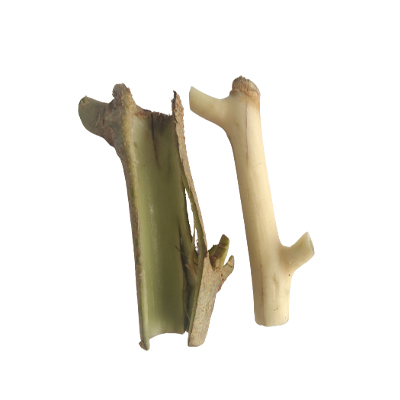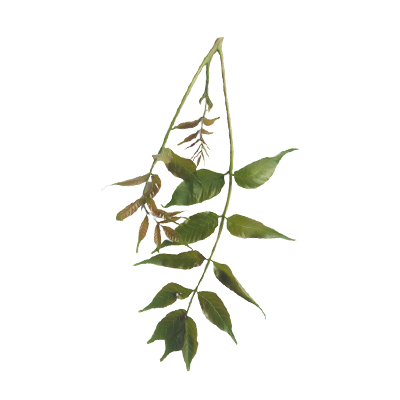Wodier Tree
Lannea coromandelica (Houtt.) Merr.
Anacardiaceae
Location in our garden
Principal
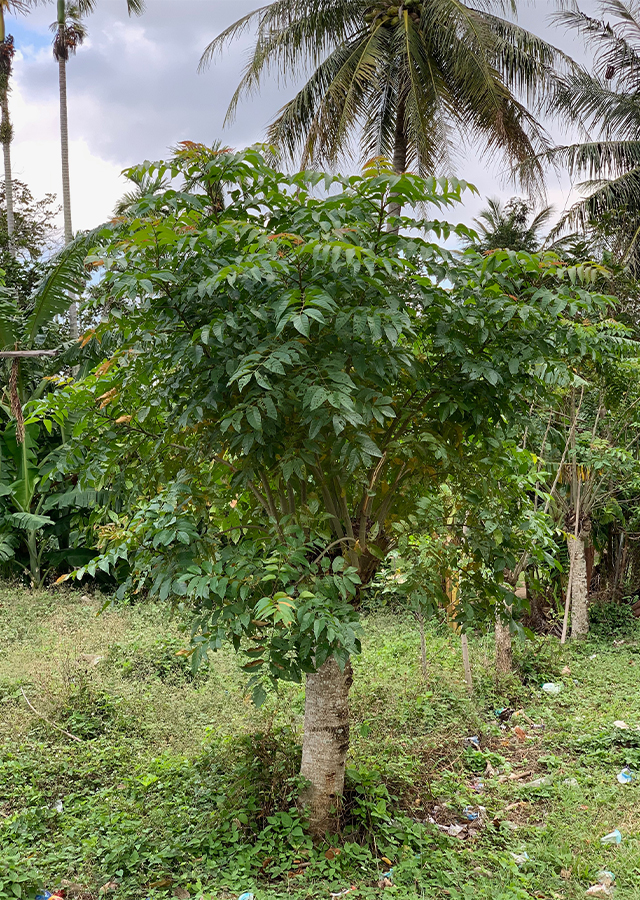
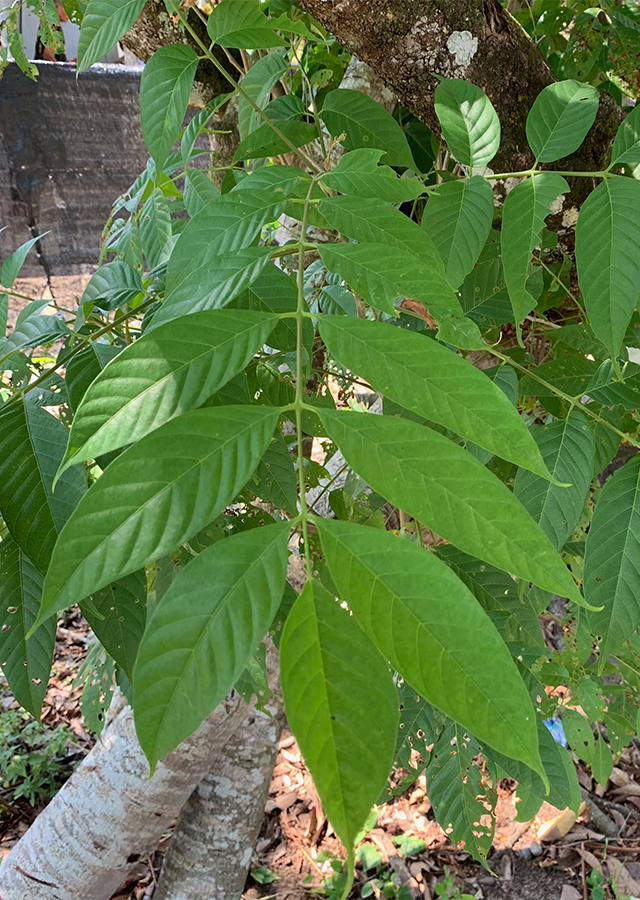
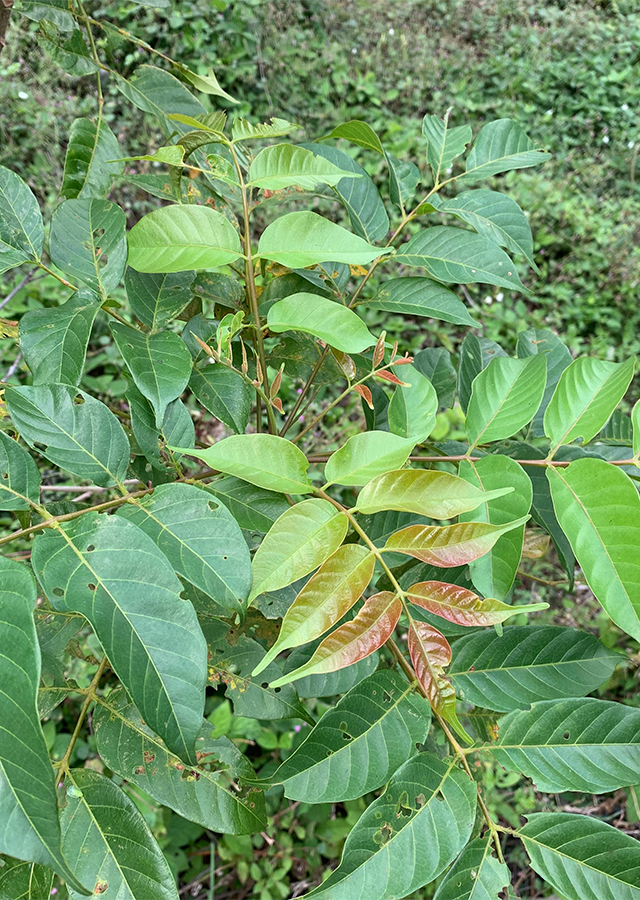
Synonym
Calsiama malabarica Raf
Haberlia grandis Dennst
Lannea grandis (Dennst.) Engl.
Habitus
Trees. A deciduous tree usually grows 5-10 m tall, but some specimens up to 20 m tall
Part Used
Leaves
Bark
Latex
Growing Requirements
Full Sunshine
Habitat
Forest
Roadside
Overview
The Indian ash tree is native to Andaman Island, Assam, Bangladesh, Cambodia, China, East Himalaya, India, Laos, Myanmar, Nepal, Nicobar Island, Sri Lanka, Thailand, Vietnam. The leaves are gathered from the wild for local use as food. The plant is also cultivated in some areas of the tropics as a hedge plant and roadside tree.
Vernacular Names
Jhingangummi (German), Anakkaram (India).
Agroecology
L. coromandelica grows in lowland and hill forests at elevations of 100 - 1,800 m. Succeeds in tropical and subtropical zones with most soils of moderate fertility, tolerating poor soils. Grows best in areas in a sunny position, where the mean annual temperature falls within the range 32 - 40 °C. Plants are killed at temperatures below -2.5 °C. Prefers a mean annual rainfall of 1,200 - 2,000 mm, and a pH in the range 5-6.5. The tree is resistant to fire.
Morphology
- Barks - surface grey to dark brown, rough, exfoliating in small irregular flakes, fibrous, blaze crimson red or deep pink; exudation gummy, red, young parts stellate-rusty tomentose.
- Leaves - alternate, imparipinnate, trifoliolate or rarely unifoliolate, usually clustered at the end of the branches, leaflets sessile or petiolulate, opposite or subopposite, usually entire.
- Flowers - unisexual, yellowish-green. male flowers in compound racemes, ovary abortive, female flowers in simple racemes; petals and sepals as in male flowers, ovary superior, ovule pendulous from near the top of the cell.
- Fruits - drupe compressed, red, 12 mm long, obovoid, ovoid or oblong, showing persistent separated style-bases, mesocarp thin, endocarp woody, surface ridged and alveolate, with 1–2 ovate opercules at the apex.
- Seeds - reniform, compressed, cotyledons plano-convex.
Cultivation
- By seeds - it only has a short viability and so needs to be sown as soon as possible.
- By stem cuttings - very easy, even large branches usually root.
Chemical Constituents
Saponins, tannins, phenolic, alkaloids, steroids, flavonoids, terpenoids, polyphenol, β-sitosterol, ellagic acid, quercetin, leucodelphinidin, isoquersitrin, leucocyanidin.
Traditional Medicinal Uses
- Its pharmacological study revealed anti-inflammatory, antimicrobial, hypotensive, anticancerous activities.
- The leaves and the stem bark have painkilling and astringent properties.
- The plant is used in traditional medicine for all local swelling, pain and inflammation and treats tumours, ulcers, cancer, sprains, bruises, skin diseases, and dysentery.
- Both the leaves and the stem bark, mixed with toothpowder for use in toothache.
- The leaves are copped as fodder and fed the livestock in inflammatory and digestive problems.
Part Used
Reference Sources
- Fern, Ken. (2014). Useful Tropical Plants: Lannea coromandelica. http://tropical.theferns.info/viewtropical.php?id=Lannea+coromandelica. 11-02-2021.
- Kew Science. (2017). Lannea coromandelica (Houtt.) Merr. http://www.plantsoftheworldonline.org/taxon/urn:lsid:ipni.org:names:69758-1. 11-02-2021.
- Keralaplants.in. (No date). Lannea coromandelica. http://keralaplants.in/keralaplantsdetails.aspx?id=Lannea_coromandelica. 11-02-2021.
- Rahman, M., Khatun, A., Uddin, S.J., and Shilpi, J.A. (2016). Pharmacology Online: Comparative Effect Of Lannea Coromandelica (Houtt.) Merr.Leaves And Stem Barks On Acetic Acid-Induced Pain Model In mice And Chromogenic Reagents: Exploring The Analgesicpotential And Phytochemical Groups. Vol.1 (pp.146-152). https://pharmacologyonline.silae.it/files/archives/2016/vol1/PhOL_2016_1_A018_25_Rahman_146_152.pdf
- International Journal of Pharmaceutical Science and Research. (2015). Detection Of Active Constituents From The Leaf Extract Of Lannea Coromandelica By Gc-Ms Testing And Assessment Of Its Pharmacological Activity. https://ijpsr.com/bft-article/detection-of-active-constituents-from-the-leaf-extract-of-lannea-coromandelica-by-gc-ms-testing-and-assessment-of-its-pharmacological-activity/?view=fulltext. DOI: 10.13040/IJPSR.0975-8232.6(3).1217-21. 11-02-2021
